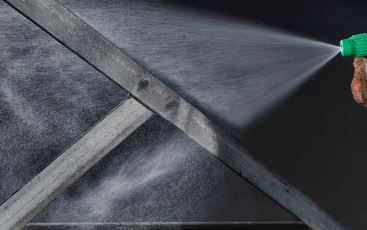Today’s topic is Anti-Spatter Spray. Most spatter issues can be resolved by having a correct set up of your MIG welder. There are two procedures that anti-spatter is commonly used for.
1. Coating on work piece or on fixture
2. Coating nozzles
Most times when you hear the term anti-spatter spray, it is referring to coating the work piece or fixture with a barrier coating that will not allow the “BBs” to stick. The most used anti-spatter sprays normally contain silicone, solvent and is solvent based. Newer and more environmentally friendly anti-spatters are water based.
Solvent Based Anti-Spatter
Hard to remove, leaving a greasy residue that is hard clean and paint afterwards
Flammability
Staining of the metals
Contamination of the weld
Environmental hazards – 70% of anti-spatter s on the market contain methylene chloride which has been shown to cause cancer and turns into phosgene gas (mustard gas) when heated
With these drawbacks, why do people continue to use these products? They are inexpensive to acquire.
Water Based Anti-Spatter
Less effective than solvent based anti-spatter
High evaporation rate
Some rusting of parts
Flammable due to aerosol propellant in can
While water based anti-spatter is much more environmentally friendly, it does not give the performance that the shops are used to.
Here is one that I use from Walter that I have found to work the best in all applications – E-Weld 4. It is environmentally friendly, non-flammable, water based, easy to clean up, and has a rust inhibitor, but its best feature is that it is heat adverse. When you spray it on and start to weld, the anti-spatter moves from the heat source, giving a clean weld.
The other procedure that shops use anti-spatter for is nozzle coating. A regular anti-spatter will not work for this application, so the shop will use nozzle dip or ceramic nozzle spray.
Nozzle Dip is a gel in a tub that the welder dips the nozzle into before welding. It is supposed to give protection for the nozzle, when in fact it just burns off when heated and may cause the gel to drip into the work piece. The main reason for its use is that it is inexpensive.
Ceramic Nozzle coating is a high temperature spray that is placed inside the nozzle. Coating and protecting against spatter build-up for up to 8 hours.
By: Craig Cooley Abrasives Expert



